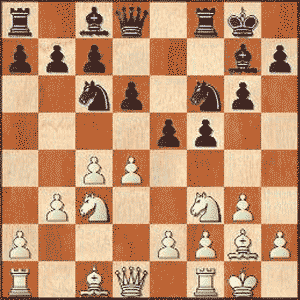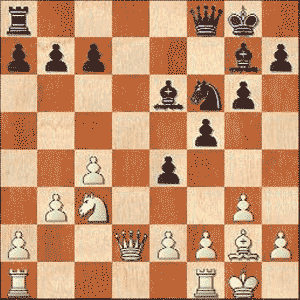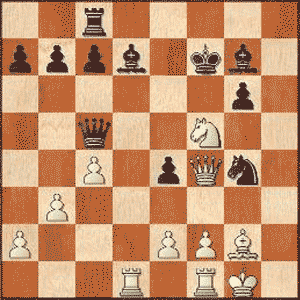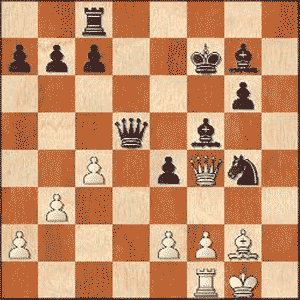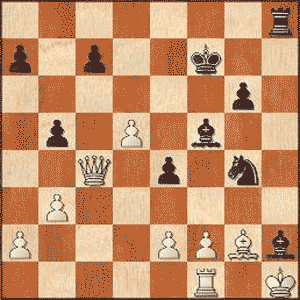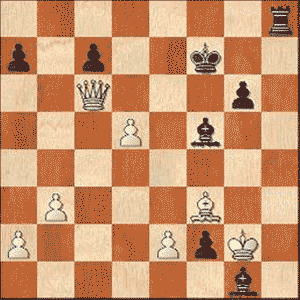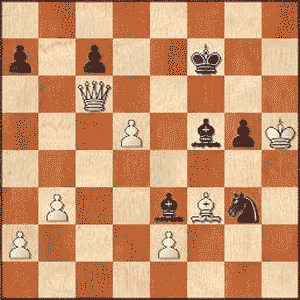| Back to Back Issues Page |
 |
|
LCB, Issue #098 --, Meet the Queen's Pawn Game August 01, 2023 |
Meet the Queen's Pawn GameLapoc Chess Board, Issue #098 -- GOTM #68 learn and play online chess In the era of Lasker, Tarrasch, Nimzowitsch, Alekhine, Rubinstein, Capablanca and others, 1.d4 was the most popular opening move. This move emerged as Wilhelm Steinitz introduced the controversial idea of positional chess in the 1870s. The Romantic players were repulsed by Steinitz's new approach, saying it was unmanly and a disgrace to play with the emphasis on defense rather than attack. This of course the new positional style of which 1.d4 was the main first move. By the 1910s and 20s the argument had been decisively won by the positional argument and a clear majority of world level games were beginning with 1.d4. Let's see Jose Raul Capablanca demonstrate the power of the Queen's Pawn Game. In his home town of Havana in 1912 he plays J. Baca Arus. Meet the Queen's Pawn GameCapablanca, J.R. - Baca Arus, J. [D02]GotM #68, Havana, 1912 [Connaughton, Ken] 1.d4 Queen's Pawn Game 1...d5 Closed Game 2.e3 e6 3.Bd3 Bd6 4.Nf3 Nd7 5.Nbd2 f5 6.b3 Nh6 7.Bb2 Qf6 8.c4
White now decides to begin the process of opening the position. He delays showing Black which wing his King will go to. 8...c6 9.Qc2 0-0 10.h3 g6 Black setting up a defensive structure, blunting White's Queen-Bishop battery on the b1-h7 diagonal. His dark squares are though now weakened as a result. 11.0-0-0 White castles long and will open the position now. 11...e5?
Black decides to open in the center but in this he plays into his opponent's hands. The White pieces are much better placed to control the long diagonal and the adjacent light diagonals. He also looks to have the edge in the d-file. [11...a5; 11...Nf7] 12.dxe5 This response is necessary but White is not unhappy. Black's 12th move gives him the chance to spring a tactical combination that starts with this. 12...Nxe5 13.cxd5 The c and d-files are now both open along with the long diagonal. White has ascendency in all and Black will also get stuck with a weak isolated d-pawn. 13...cxd5 14.Nc4!
The combo continues with this picturesque thrust. 14...dxc4 15.Bxc4+ Nhf7 16.Rxd6!
White very cleverly changes the nature of the material sacrifice.16...Qxd6 17.Nxe5The sacrifice has changed from a minor piece to an exchange sacrifice. 17...Be6 18.Rd1
Look how dominant the White pieces are over their Black counterparts. 18...Qe7 19.Rd7 Bxd7 20.Nxd7 Rfc8 The King must be swiftly given room to flee. The earlier
decision to weaken the dark squares is coming back to bite. He faces the full glare of the powerful Bishop pair. Oh and a Queen too. [No time for 20...Qxd7?? as the Black King is about to be surrounded: 21.Qc3 Rfd8 22.Qg7#] 21.Qc3 Rxc4
Absolutely necessary but probably not enough to save the game. 22.bxc4 Nd6 Finally the King has a flight square but White will exact material losses on Black just the same. 23.Qh8+ Kf7 24.Ne5+ Fantastic and timely intermezzo to retain the Knight. 24...Ke6 25.Qxa8
Black has saved his King but has not just relinquished his material advantage but now is down a Bishop and pawn. In the face of this he resigns. 1-0 Capablanca, J.R. - Baca Arus, J. P.S. If you do not have html based email software and you're using a text only system, you may find that the links are only partially highlighted and may not work. If this is the case, simply copy and paste the entire link into the browser and hit Enter. That should get you where you want to go. Comments, ideas, feedback? I'd be stoked to hear from you. Get in touch See you next month. Ken 
|
| Back to Back Issues Page |
